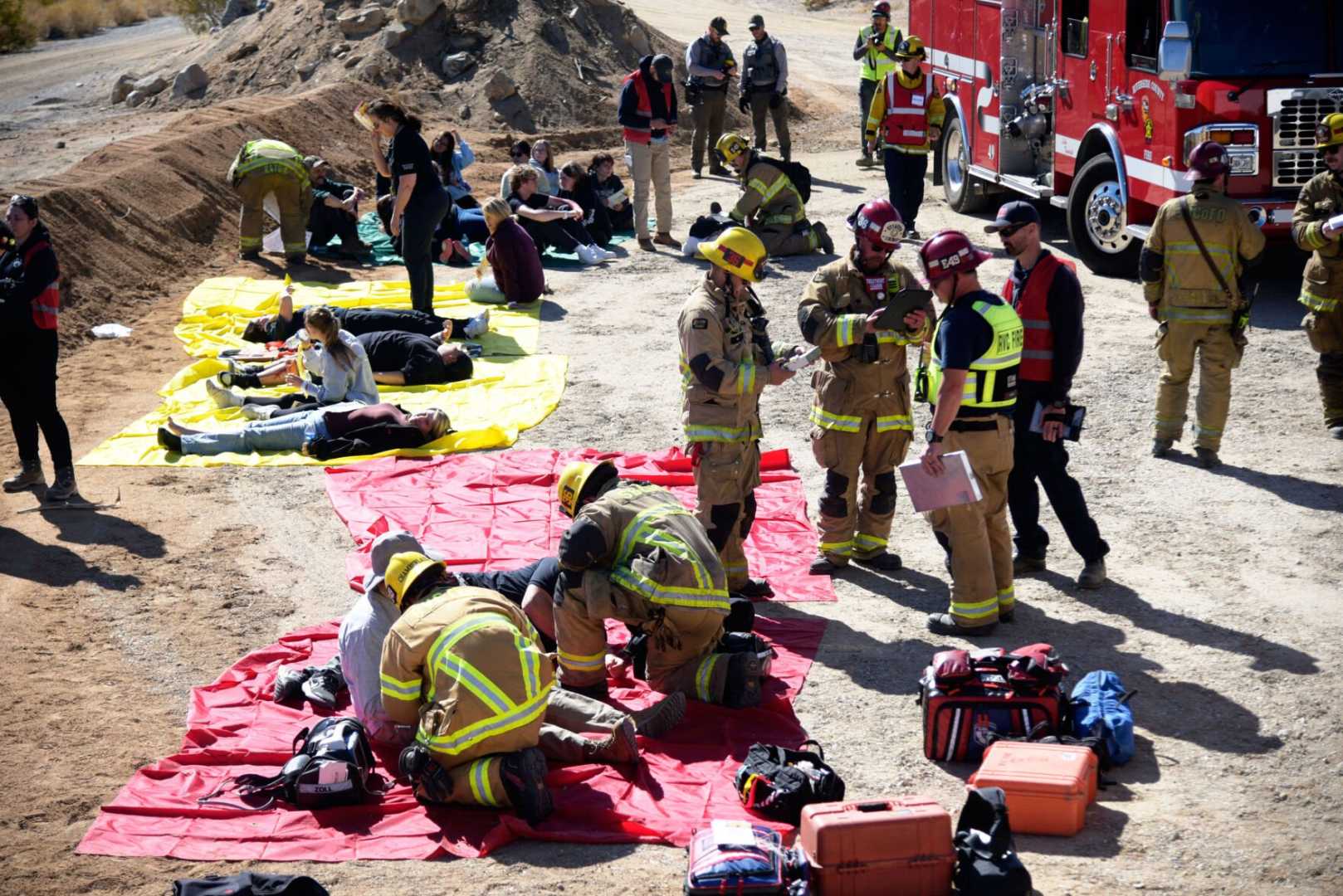News
Emergency Drill Tests Response to Mass Casualty Incident in Joshua Tree

JOSHUA TREE NATIONAL PARK, Calif. — A simulated mass casualty incident unfolded on Monday, Feb. 10, as first responders conducted emergency drills to prepare for a large-scale accident involving multiple victims. The training exercise, organized by the San Bernardino County Fire Department, included cooperation from nine agencies and simulated a collision between a tour bus and other vehicles.
“That’s where the number of victims outweighs the resources available,” explained Eric Sherwin, a spokesperson for the fire department. The drill aimed to enhance the coordination of various agencies during emergencies, an important aspect given the potential complexity of real incidents.
Setting up in a construction borrow pit near Pinto Mountain Road, emergency personnel staged a scenario with 30 volunteer victims. The drill involved cooperation from agencies including Cal Fire/Riverside County, the California Highway Patrol (CHP), San Bernardino County Sheriff, Combat Center Fire, Morongo Basin Ambulance, and American Medical Response.
“When we look at something this significant with this many victims, it’s going to take everybody working together,” Sherwin noted, highlighting the importance of inter-agency collaboration during such scenarios.
To ensure preparedness across shifts, the county fire department arranged for three training sessions—two on Monday and another scheduled for Saturday. The National Park Service provided venue support, making the unique location a factor in the exercise.
Students from Twentynine Palms High School enrolled in an emergency medical responder course participated as victims, giving them firsthand experience in emergency situations. “These are future EMTs, nurses, paramedics, firefighters, law enforcement officers,” Sherwin said. “For them to be able to experience it from a patient’s viewpoint, I hope would give them a better perspective when they’re a provider, remembering what a patient would have gone through.”
The Joshua Tree National Park’s remote setting presented another opportunity for education, as first responders trained without the assistance of reliable cell service, a common challenge in real emergencies. “Technology has allowed us to be much more efficient on parts of our job, but it also makes us dependent on it,” Sherwin stated.
Helicopters were utilized from various agencies, including the CHP and REACH Air Medical Services, to simulate patient transportation during the drill. The exercises will not interfere with public access to the park, as they occurred in non-public areas and were monitored by National Park Service volunteers.
Past incidents involving tour buses emphasize the need for preparation. Sherwin referred to significant collisions in the past, including a 2016 bus crash on Interstate 10 that resulted in 13 fatalities and another fatal incident in 2013 near Yucaipa. “These mass transportation incidents can present their own set of challenges,” he added.
Sherwin underscored the importance of these drills, stating, “We might have a whole lot of meetings and think we have a great plan, but then we put it to use and we identify weaknesses.” After conducting each drill, participants will complete surveys that help in evaluating performance and making future improvements. An after-action report will collate findings to enhance training and response strategies for all agencies involved.
“We’re getting a lot of use out of this one drill,” Sherwin concluded.












